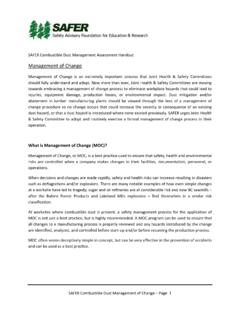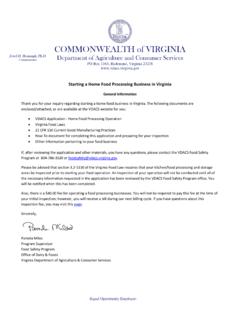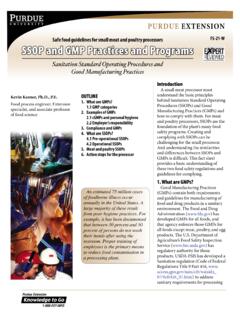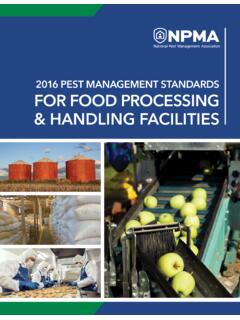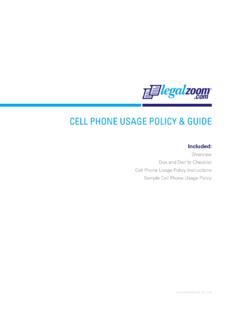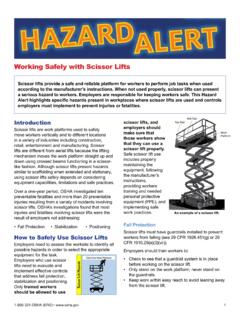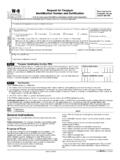Transcription of Management of Change - SAFER
1 SAFER Combustible Dust Management Assessment Handout Management of Change Management of Change is an extremely important process that Joint Health & Safety Committees should fully understand and adopt. Now more than ever, Joint Health & Safety Committees are moving towards embracing a Management of Change process to eliminate workplace hazards that could lead to injuries, equipment damage, production losses, or environmental impact. Dust mitigation and/or abatement in lumber manufacturing plants should be viewed through the lens of a Management of Change procedure so no Change occurs that could increase the severity or consequence of an existing dust hazard, or that a dust hazard is introduced where none existed previously.
2 SAFER urges Joint Health & Safety Committee to adopt and routinely exercise a formal Management of Change process in their operation. What is Management of Change (MOC)? Management of Change , or MOC, is a best practice used to ensure that safety, health and environmental risks are controlled when a company makes changes in their facilities, documentation, personnel, or operations. When decisions and changes are made rapidly, safety and health risks can increase resulting in disasters such as deflagrations and/or explosions. There are many notable examples of how even simple changes at a worksite have led to tragedy; sugar and oil refineries are at considerable risk and now BC sawmills.
3 After the Babine Forest Products and Lakeland Mills explosions find themselves in a similar risk classification. At worksites where combustible dust is present, a safety Management process for the application of MOC is not just a best practice, but is highly recommended. A MOC program can be used to ensure that all changes to a manufacturing process is properly reviewed and any hazards introduced by the Change are identified, analyzed, and controlled before start up and/or before resuming the production process. MOC often seems deceptively simple in concept, but can be very effective in the prevention of accidents and can be used as a best practice.
4 SAFER Combustible Dust Management of Change Page 1. When is MOC used? Generally, a business need or opportunity becomes a project or business solution and requires changes in the workplace that can affect processes, systems, people, or organizational structure. Think about whether implementing this Change improves your safety program and makes good business sense. One obvious benefit MOC provides is avoiding the consequences of unforeseen safety and health hazards through planning and coordinating the implementation of the Change . In many high risk operations, particularly oil and gas refining, MOC is required to mitigate safety risks and concerns.
5 What are the benefits of MOC? It minimizes unplanned adverse impacts on system integrity, security, stability, and reliability for the manufacturing process being altered or added. It maximizes the productivity and efficiency of staff planning, coordinating, and implementing the changes. It provides a stable and safe production environment. It ensures the proper level of technical completeness, accuracy of modifications, and testing of systems before implementation. It provides an appropriate level of Management approval and involvement. How do you effectively design and implement MOC?
6 Managing Change begins with a discussion of the types of changes being considered that could affect workplace safety and health, including effects that may not be obvious. Procedures for managing Change should be written and regularly reviewed to reduce the risk associated with any changes. Changes being considered must be thoroughly evaluated for how they affect employee safety and health. Sometimes there is a domino effect, where one Change leads to more changes, and you will need to determine if the changes being considered will cause additional changes to operating procedures.
7 A MOC program must specify what types of changes are to be managed. For example, will the Joint Health & Safety Committee decide that they will apply MOC parameters to physical alterations to equipment only or new operating procedures only or both. Will the Joint Health & Safety Committee also recommend MOC parameters to examine manning levels and/or training procedures. A proper MOC system also requires that any Change be evaluated before implementation. The level of evaluation can depend on the degree of Change and how critical it is to the safety of your operations.
8 SAFER Combustible Dust Management of Change Page 2. Employees, as well as maintenance and contract workers whose work will be affected by the Change , must be informed and trained on the new equipment, process or whatever the Change includes. This must be done before startup of the process or startup of the affected part of the process. Managing Change also means updating any safety information, operating procedures or practices related to the new procedures. Engaging the Joint Health & Safety Committee in this type of work has proven to be a worthy practice that promotes and strengthens Joint Health & Safety Committee involvement.
9 Elements of an effective MOC Program are: Procedures that consider: o The technical basis for the proposed Change . o Impact of the Change on employee safety and health. o Modifications to operating procedures. o Time needed for the Change . o Authorization required for the proposed Change . Steps taken to identify hazards before the changes are made. Identifying methods to screen and classify changes. Identifying the key hazards in changes. Identifying methods for documenting MOC reviews. Procedures to make approvals and authorizations workable.
10 Plans to inform and train personnel about the changes. Methods for updating Process Safety Information, procedures and other Process Safety Management information. Steps for effective implementation. Procedures for reviewing and revising any existing MOC Program. Best Practices in MOC. 1. Compile safety information on the products, equipment, materials or processes that are changing and write policies and procedures to incorporate the new information. Be sure to include information on how to investigate accidents, audit compliance with safety procedures and plan for emergency responses.
